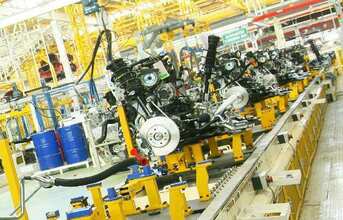
MES
Statistical process control (SPC) and statistical quality control (SQC) are key components of an MES system and allow it to function as a visual tool to help maintenance managers and shopfloor managers predict when, and what kinds of, proactive efforts will help keep things running, "today" and "right now" for better overall equipment effectiveness. It can offer a forward-looking, better preventive maintenance and just-in-time responsiveness can mean less downtime, less scrap, more quality product.
Top executives sometimes don't realise they can drive significant business value from MES. While MES is often viewed as a tool to assist the shopfloor in day-to-day tasks, MES systems offer ample potential to help transform the shopfloor into a business center of excellence, and propel companies forward for market leadership.
MES can deliver consistent, accurate, and visible metrics. Operations management can use those metrics to identify underperforming and high-performance machines and then optimise asset utilisation accordingly to eliminate bottlenecks. They can propagate best practices enterprise-wide from lessons learned. As well, performance efficiencies gained from MES can open up the possibility of increasing output and profitability, all from existing production assets. Capital expenditures can be deferred or rerouted to fuel investments in other areas to expand and grow the business.
Better Together
While the business case is clear for both ERP and MES, what is now being revealed is the business case around leveraging the synergies of both systems. One of the common challenges manufacturing organisations face is the need to effectively connect planning and scheduling data from its ERP system with the shopfloor realities of MES into one centralised system. Imagine the possibilities of having real-time access to machine data that can be imported into an ERP system to better plan schedules and resources to meet customer demand?
(Continued on the next page)



























